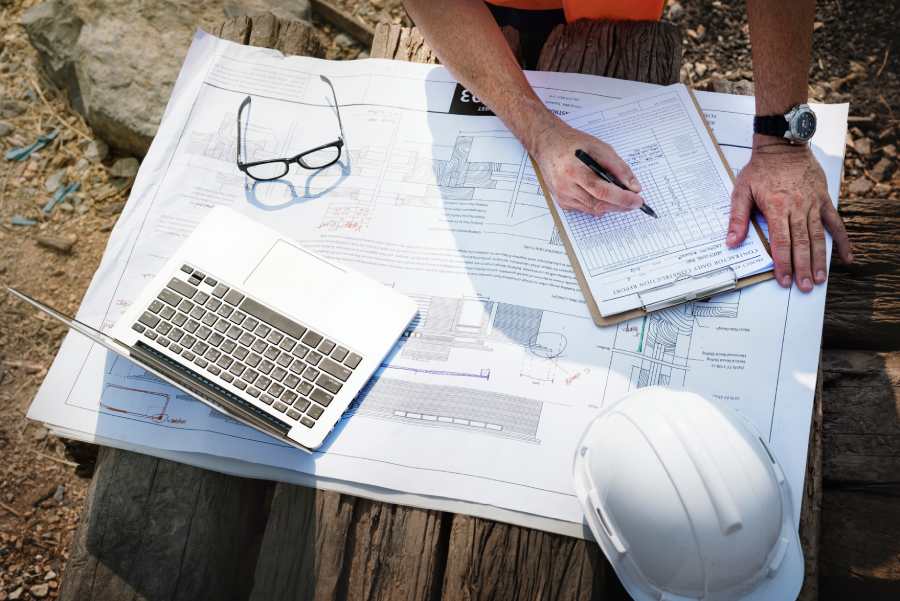Before any land development, property transaction, or major construction project, it is essential to understand the environmental conditions of the site. This process is carried out through Environmental Site Assessments (ESAs). These assessments identify potential contamination, evaluate risks, and ensure compliance with environmental regulations.
In this guide, we’ll explain the environmental site assessment phases, detail what happens in each stage, and answer a common question: what are the 4 phases of environmental assessment?

What Are the 4 Phases of Environmental Assessment?
While ESAs are typically described in three phases, many professionals refer to a “fourth phase”: post-remediation and site management.
- Phase 1: Initial assessment through records review and inspection.
- Phase 2: Sampling and testing to confirm contamination.
- Phase 3: Remediation and cleanup of contaminants.
- Phase 4 (informal): Long-term monitoring, maintenance, and compliance reporting.
This final stage ensures that the site remains safe and continues to meet environmental and regulatory standards long after cleanup.
Phase 1 Environmental Site Assessment (ESA)
The Phase 1 ESA is the first step in evaluating environmental risk. Its primary objective is to identify potential or existing contamination liabilities without conducting physical testing.
Objectives and Scope
- Identify potential environmental concerns (Recognized Environmental Conditions, or RECs).
- Provide buyers, developers, and lenders with baseline environmental information.
- Determine whether further investigation (Phase 2) is necessary.
Components of Phase 1 ESA
- Site Visit and Visual Inspection
- Environmental professionals conduct a walkthrough of the property.
- Look for signs of contamination such as stained soil, stressed vegetation, or leaking storage tanks.
- Historical Records and Documentation Review
- Review property deeds, aerial photographs, fire insurance maps, and land-use records.
- Identify past industrial or commercial activities that may have introduced contamination.
- Interviews with Property Owners and Stakeholders
- Gather information from current and past owners, tenants, and local officials.
- Confirm land-use history and uncover unrecorded issues.
- Identification of Potential Environmental Concerns
- Compile findings into a report.
- Identify RECs such as underground storage tanks, hazardous waste handling, or proximity to industrial facilities.
A Phase 1 ESA does not involve soil or water sampling—it is strictly a research and observation-based assessment.
Phase 2 Environmental Site Assessment (ESA)
If Phase 1 identifies potential contamination, the next step is a Phase 2 ESA. This stage involves physical testing to confirm or rule out environmental hazards.
Purpose and Goals
- Collect data to determine whether contamination is present.
- Assess the type, concentration, and extent of pollutants.
- Provide scientific evidence for decision-making and regulatory compliance.
Methods and Activities in Phase 2 ESA
- Sampling and Laboratory Analysis
- Soil, groundwater, surface water, and building materials are collected.
- Samples are analyzed for hazardous substances such as heavy metals, hydrocarbons, solvents, and asbestos.
- Subsurface Investigations and Soil Testing
- Drilling and test pits are used to evaluate soil structure and contamination levels.
- Geophysical methods may identify buried tanks or waste.
- Assessment of Groundwater Quality
- Monitoring wells are installed to evaluate groundwater depth and contamination spread.
- Results help determine if pollution poses risks to drinking water supplies.
- Evaluation of Potential Contamination Sources
- Identify whether contamination originates on-site or from nearby properties.
- Evaluate risks for human health and the environment
Phase 2 findings guide whether remediation is required, or whether the site is safe for its intended use.

Phase 3 Environmental Site Assessment (ESA)
When contamination is confirmed, a Phase 3 ESA focuses on cleanup and mitigation. This stage turns data into action by designing and implementing remedial strategies.
Objectives and Scope
- Develop site-specific remediation plans.
- Remove or contain contamination.
- Restore the site for safe development or continued use.
Remediation and Mitigation Activities
- Cleanup and Removal of Contaminants
- Excavation and removal of contaminated soils.
- Pump-and-treat systems for groundwater cleanup.
- Removal of underground storage tanks or hazardous waste.
- Implementation of Remedial Measures
- In-situ treatment such as bioremediation, soil vapor extraction, or chemical stabilization.
- Containment strategies like capping contaminated areas.
- Monitoring and Ongoing Management of the Site
- Regular sampling to track remediation effectiveness.
- Long-term monitoring to ensure compliance with regulatory standards.
Phase 3 ensures that contaminated sites are safely rehabilitated for development, reuse, or conservation.
Role of Qualified Environmental Professionals
ESAs must be conducted by Qualified Environmental Professionals (QEPs), typically engineers, geologists, or scientists with experience in environmental compliance. Their role includes:
- Interpreting complex data.
- Applying regulatory standards.
- Providing expert recommendations to property owners, developers, and lenders.
Working with professionals ensures that ESA findings are credible, defensible, and accepted by regulators and financial institutions.

Integration and Reporting
At every stage, results are compiled into detailed reports that:
- Summarize findings and methodologies.
- Identify potential risks and liabilities.
- Recommend next steps (e.g., whether Phase 2 or 3 is required).
- Provide documentation for regulatory agencies, lenders, or potential buyers.
Conclusion
Understanding the environmental site assessment phases is essential for anyone involved in property transactions, development, or land management.
So, what are the 4 phases of environmental assessment? They represent a progression from discovery to remediation and ongoing stewardship, ensuring that land use decisions are safe, responsible, and sustainable.
By following these phases with the help of qualified professionals, landowners, developers, and communities can protect environmental resources while moving projects forward with confidence.
